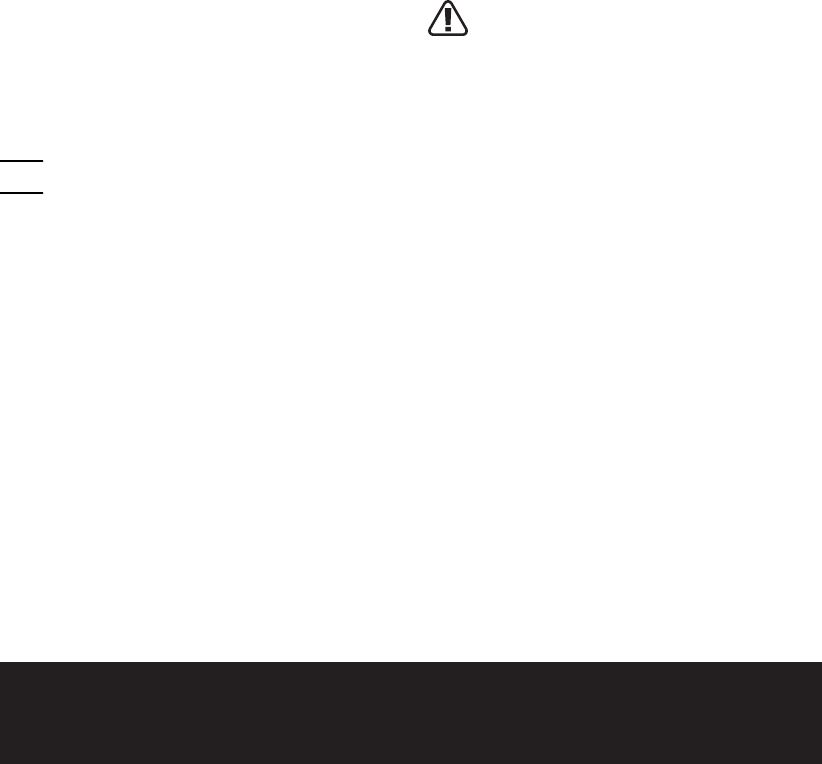
Cordless Limbing and Trimming Chain Saw EN
1918
1918
BEFORE commencing the cut.
• Neverstandunderabranchbeingcut.
2. Will the branch split before it is cut
through? (See Fig. Q1,Q2)
• Topreventsplitting,turntheJAWSAW
®
upsidedown and make a small cut (less
than 1/3 diameter of the limb) from the
underside.
• ThenturntheJAWSAW
®
over to the
normal position and cut from top down,
slightly further out from the trunk than the
initial undercut.
3. Is the branch under tension, will it spring
suddenly or trap the saw when it is cut?
• Alwaysstandoutsidethepathofa
springy branch. It can strike suddenly with
surprising force and cause injury or loss of
control of the saw.
• Alwayscutfromthetensionsideofa
branch, usually the top of a branch on a
standing tree, but can be any side of the
branch of a fallen tree.
• Ifthecutstartstocloseonthesaw,you
are cutting from the wrong side, keep the
saw running and pull the saw to retract the
blade from the cut.
• Ifthesawbecomestrappeddonottry
to pull it out with excessive force, lift the
branch to open the cut while an assistant
removes the saw.
Kickback safety
This saws chain is covered by a guard
however, kickback can still occur. The
following steps will reduce the risk of kickback
• Usebothhandstogripsawwhilesawis
running. Use firm grip. Thumbs and fingers
must wrap around saw handles.
• Keepallsafetyitemsinplaceonsaw.
Make sure they work properly.
• Donotoverreach.
• Keepsolidfootingandbalanceatalltimes.
• Standslightlytorightsideofsaw.This
keeps your body from being in direct line
with Saw Chain.
• Donotletguidebarnosetouchanything
when Saw Chain is moving.
• DonotburyGuideBarnoseortryto
plunge cut (boring into wood using bar
nose).
• Watchforshiftingofwoodorotherforces
that may pinch Saw Chain.
• Useextremecautionwhenreenteringa
previous cut.
• NeveruseadullorlooseSawChain.Keep
Saw Chain sharp with proper tension.
PROPERLY USING THE JAWSAW
®
Use the JAWSAW
®
only with secure footing.
Hold the JAWSAW
®
at the right-hand side of
your body. (See Fig. R)
The Saw Chain must be running at full speed
before it makes contact with the wood. Use
the metal Jaw Teeth (6) to secure the saw onto
the wood before starting to cut. (See Fig.S)
Do not operate the JAWSAW
®
with arms fully
extended or attempt to saw areas which are
difficult to reach, or on a ladder. (See Fig. T)
Cutting wood under tension (See Fig. U)
WARNING: When cutting a limb
that is under tension, use extreme
caution. Be alert for wood springing
back. When wood tension is released,
the limb could spring back and strike
operator causing severe injury or death.
When sawing logs supported on both ends,
start the cut from above(Y) about 1/3 of the
diameter into the log and then finish the cut
(Z) from below, in order to avoid contact of
the JAWSAW
®
with the ground. When sawing
logs supported on only one end, start the cut
from below (Y) about 1/3 of the diameter into
the log and finish the cut from above (Z) in
order to avoid log splitting or jamming of the
tool.
LIMBING A TREE (See Fig. V)
Limbing is removing the branches from a
fallen tree. When limbing leave larger lower
limbs to support the log off the ground.
Remove the small limbs in one cut as
illustrated. Branches under tension against
the ground should be cut from the bottom up
to avoid binding the JAWSAW
®
.
Bucking a log (See Fig. W)
Bucking is cutting a log into lengths. It is
important to make sure your footing is firm and
your weight is evenly distributed on both feet.
Follow the simple directions for easy cutting.


















